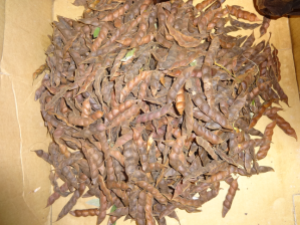 We have been growing Pigeon Pea (Cajanus cajan) for many years and alas, I have to admit that I have neglected the wonders of this food plant. We haven’t actually been actively growing it; in fact, it started off as a single seed which we planted on the farm and now due to voluntary seeding, we have about 20 plants which are happily producing a bountiful crop.
We have been growing Pigeon Pea (Cajanus cajan) for many years and alas, I have to admit that I have neglected the wonders of this food plant. We haven’t actually been actively growing it; in fact, it started off as a single seed which we planted on the farm and now due to voluntary seeding, we have about 20 plants which are happily producing a bountiful crop.
In the past, I have harvested the pods in the fully dried form and cooked it as a lentil substitute. It has a good, nutty taste but in its raw form, it is extremely hard in consistency so in order to cook it, it takes about 3 hours. The slow cooking time of this legume has been holding me back from experimenting with it.

This year, I have decided to be a bit more flexible with it and I am trying to find other ways of eating it. The pods can be picked at a green (almost yellow in colour) stage and cooked like peas. I actually achieved a good result with the peas cooked in rice and bacon.
At its greenest stage, when seeds have not formed, apparently the whole pod can be eaten. The green pods took ages (well, half an hour) to cook to tenderness. They were actually a let down and tasted over-cooked and sucked of all vitality.

Anyway, the next experiment will be to sprout the dried seeds to see if this will reduce the cooking time. I will keep you posted with my adventures with pigeon pea!
0